13 Largest Rabbit Breeds & How to Care for Them
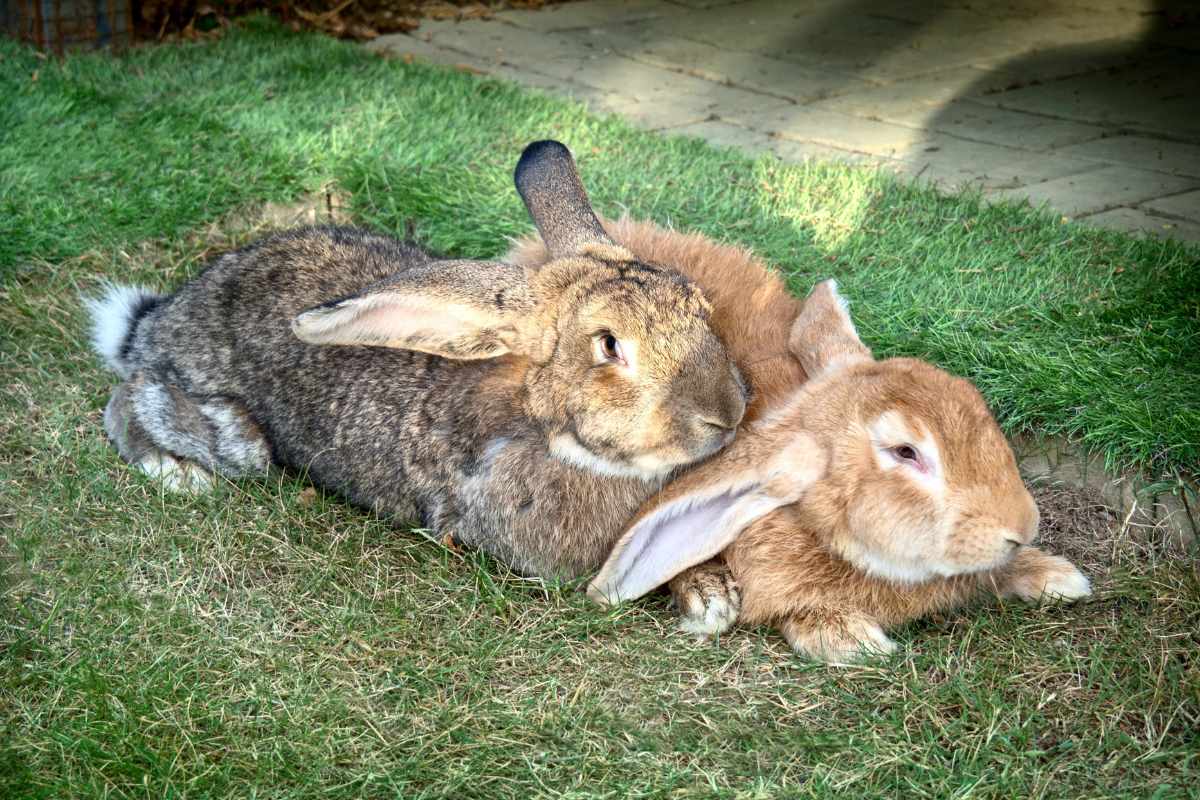
When you think of a rabbit, the first thing on your mind is a little bundle of fluff, not 20 pounds and almost as big as a cocker spaniel. But what if I told you those 20-pound rabbits make the best pets for knowledgeable rabbit owners? And what if I told you there are many more giant rabbit breeds than the famed Flemish Giant?
A “large” rabbit is typically anything over 8 lbs. The standard weight for a regular-sized rabbit is 5 pounds. So, even at 10 pounds, that’s a big bunny! A giant rabbit breed is typically over 12 pounds. There are dozens of large and giant rabbit breeds (even though some aren’t globally recognized as official breeds).
But just because we’re cheeky, we’re going to include some of those because, believe it or not, every single one of these large rabbit breeds makes excellent pets. Keep reading to learn more about 13 of the largest rabbit breeds and how to care for them.
1. Flemish Giant
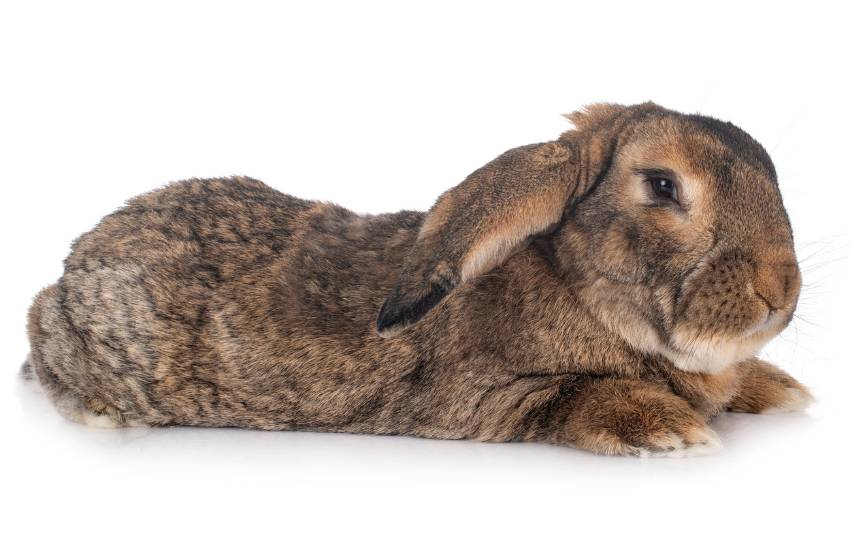
First up is the #1 largest rabbit breed in the world, although it’s one of those breeds that isn’t “official” outside of Europe. The Flemish Giant originated in Belgium around the 16th century. As I said before, they can grow up to be the size of a medium dog breed and will weigh in at 20 pounds by the time they reach adulthood. They have a relatively short lifespan of 5-7 years.
Flemish Giants are well-known for being docile and gentle, making them well-suited for houses with children ready for the responsibility. Their smooth coat comes in black, white, sandy brown, steel grey, light grey, blue, and fawn.
2. Continental Giant
The Continental Giant, also known as the German Giant, is a derivative of the Flemish Giant (as most giant rabbit breeds are) with a similar lifespan. They are recognized as a legit breed by European Breeding Organizations but not by the American Rabbit Breeders Association.
On average, these stocky rabbits weigh up to 20 lbs and grow to at least 2 feet long. The standard size for Continental Giants is around 26 inches. Their coat is thick and needs a lot of grooming, but their fur is soft. You can find them in colours like chinchilla, yellow, black, opal, white, dark and light steel, chestnut agouti and red agouti.
3. French Lop
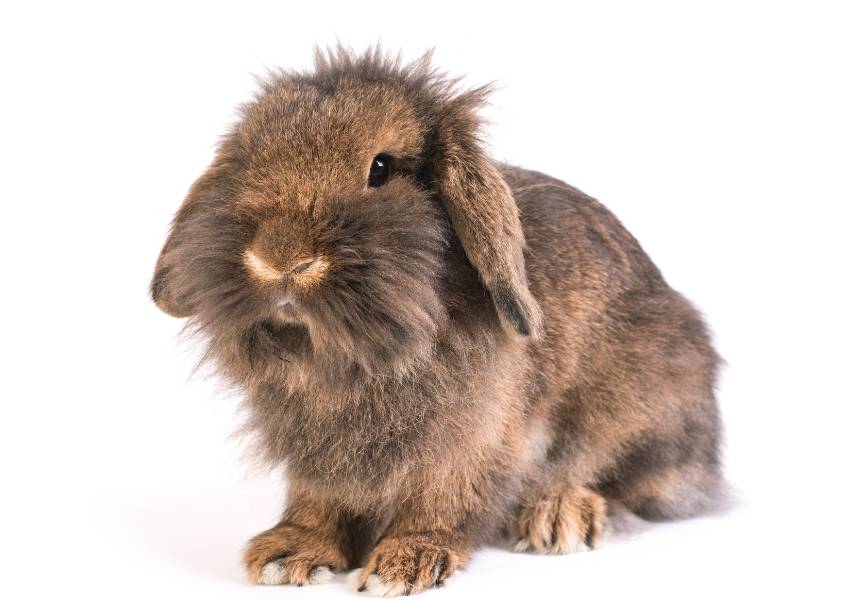
The French Lop is the most famous of the giant rabbit breeds, other than the Flemish Giant. This large rabbit breed got its start in (as you can guess) France during the 19th century. On average, they weigh around 15 pounds, but it’s not uncommon for them to reach 20 pounds. Like other large rabbit breeds, they have an average lifespan of 7 years.
Famous to the Lop, these rabbits have long, hanging ears. They also have a soft but dense fur coat that doesn’t need much grooming but may need some help during shedding season. As for temperament, you’ll be happy to know that French Lops are very laid-back and friendly rabbits.
4. Spanish Giant
As it says in the name, the Spanish Giant rabbit breed originated in Spain. The Spanish Giant breed is a result of crossing Flemish Giants with other large breeds. They’re slightly smaller than their parent breed, weighing in at 19 pounds (on average). But they have that same long and chunky body.
Spanish Giants also share a similar coat to their parent breeds. Their smooth fur requires little grooming. Coat colours include black, white, blue, grey, and fawn. These rabbits have a good temperament, known for their friendly and playful behaviour.
5. Giant Chinchilla
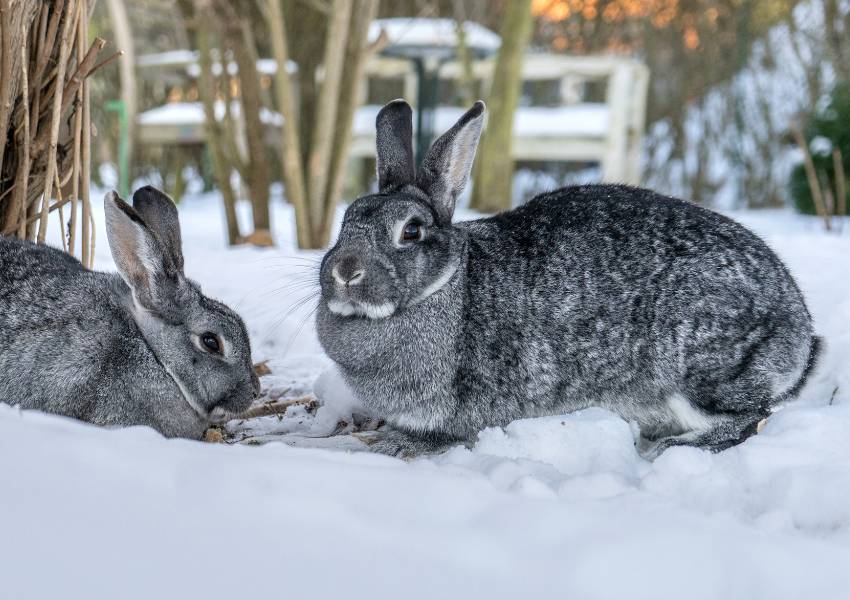
The Giant Chinchilla rabbit breed gets its name from its famous coat that resembles the texture and colour of a chinchilla. The breed is a larger derivative breed of the American Chinchilla Rabbit created in the 20s for its colouring and size.
This large rabbit breed can grow much larger than the American Chinchilla rabbit, weighing up to 16 pounds. Giant Chinchilla rabbits are well known to be gentle, affectionate rabbits. Good thing because they have a silky smooth coat just waiting to be brushed.
6. British Giant
Next is the British Giant, another descendant breed of the Flemish Giant and a rare giant rabbit breed recognized in the UK but not globally. These large rabbits can grow up to 15 pounds and have proportionally built bodies.
A British Giant’s coat is plush medium-length fur, coming in many colours, including black, white, blue, sable and opal. They’re known to be laid-back and low-energy compared to other large rabbit breeds, but they make great pets nonetheless.
7. Checkered Giant
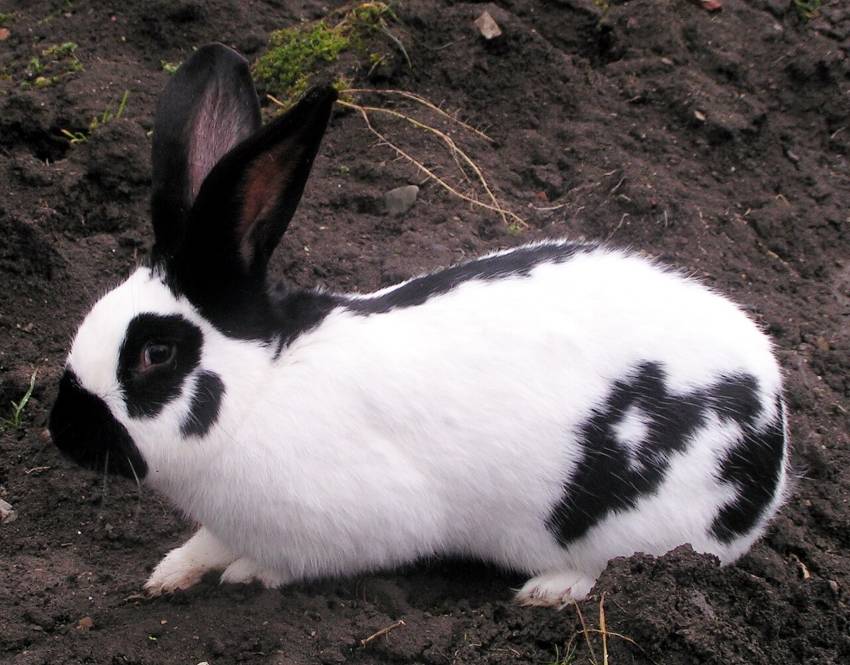
The Checkered Giant rabbit breed is an American giant rabbit breed developed in the early 1900s specifically for its uniquely checkered coat. This breed was first recognized in 1919 and has been famous in the rabbit show circuit ever since.
These large rabbits can weigh 12 pounds on average, but the breed standard does not list a maximum weight, meaning they get bigger. They have an average life span and the typical easy-going temperament of a giant, making them another great choice for giant rabbit enthusiasts.
8. Hungarian Giant
The Hungarian Giant is another giant rabbit breed stemming from the Flemish Giant. It is the smallest of the “giant” rabbit breeds but still a significantly large rabbit weighing an average of 12 pounds.
Hungarian Giants have a longer average lifespan than other large rabbit breeds (8-10 years) with low grooming requirements. And, true to the “giant” name, they are friendly and gentle pets.
9. Blanc de Bouscat
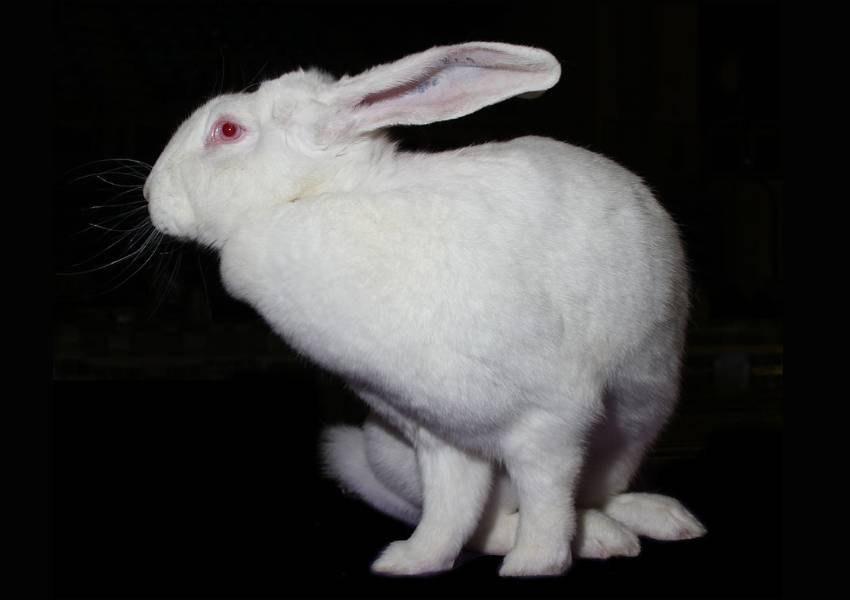
The Blanc de Bouscat originated in France in the early 1900s after breeding flemish giants, Champagne d’Argents and French Angoras. The goal was a giant rabbit breed with a flawlessly white coat and ruby eyes, also known as albinism.
After this trait became present in all the offspring, the breed became recognized as a separate breed instead of just a genetic “flaw.” Blac de Bouscats have an average weight of 13 pounds or more. Their pure white coats are silky, but they’re thick. So they will need weekly brushing.
10. Giant Angora
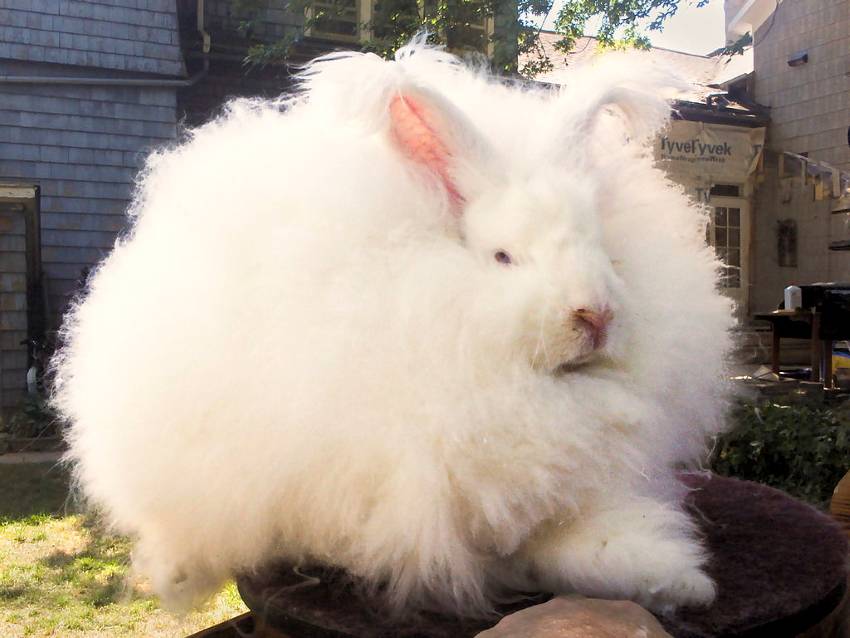
Giant Angoras are the largest of their breed group, coming in at a maximum weight of 12 pounds. But they have a much longer average lifespan than most giant rabbit breeds, at 7-12 years.
Like the Blanc de Bouscat, Giant Angoras are typically albino. However, true to the Angora breed, they have a pretty unique hairdo. Their coat has three types of fur: a dense undercoat, a longer, wiry outer coat, known as the awn hair, and longer guard hairs in between, also known as awn fluff. What this all means is that they need A LOT of grooming.
11. Silver Fox

You’d never think they’d name a rabbit after one of its main predators, but here we are. Silver Fox rabbits are an extremely rare breed developed in the mid-1920s specifically for their coat colour that mirrors silver fox fur. Typically, they can weigh up to 12 pounds.
As you can guess, the Silver Fox rabbit breed only has one coat colour: black with silver ticking all throughout the body. Thankfully, this beautiful coat doesn’t need much grooming. A regular brush and some help with shedding will do.
12. Palomino
Believe it or not, the Palomino rabbit breed was developed by mistake. Well, almost by mistake. During the 50s, the breeder was so desperate to create a new rabbit breed that he started making crossbreeds all willy-nilly. (TERRIBLE, by the way. No responsible breeder would do that in this day and age.)
Because of this, no one really knows what two breeds made the Palomino. However, one thing is sure. It’s a large rabbit weighing up to 12 pounds. Unlike the name suggests, Palomino rabbits do not have the same cream or blonde colouring as a palomino horse. In fact, they look more like wild rabbits.
13. Rex

The Rex is one of the most famous large rabbit breeds. This large rabbit breed originated in France circa 1919 and is another result of selective breeding. The goal of the breeders was to access a recessive gene called the “Rex Gene,” which gives this breed its famous short and velvety coat.
An adult Rex rabbit can grow up to 10.5 pounds. But don’t let their size fool you, these large rabbits are playful and affectionate, which is why they’re so popular.
How to Care for Large or Giant Rabbit Breeds
Owning a large rabbit is not all that different from owning a regular-sized rabbit. Really, they are no harder to care for, and the basics are the same: they need the same type of food, hay, and veterinary care. However, a few key differences make caring for a giant rabbit breed an experience all its own. Let’s talk about them.
Cost of Owning Giant Rabbit Breeds
Because of their size, you can bet your bottom dollar that large and giant rabbit breeds eat more than the average Netherland Dwarf. That means you’ll probably spend much more on food and hay.
Space Requirements for Large Rabbits
Giant rabbit breeds also need much more room than regular-sized rabbits. Rabbits of this size should be free to roam. But if not, their enclosure must have ample room to move around with access to a spacious exercise area at all times.
Interacting With Other Pets & Kids
Generally, giant rabbit breeds are known as Gentle Giants with a much calmer disposition than smaller rabbits. They are known to be better suited to a household with children and other pets than a smaller rabbit. However, no rabbit breed is suitable to be a starter pet.
Lifespan Differences
Like giant dog breeds, larger rabbit breeds tend to have shorter lifespans than smaller breeds. It is likely for the same reasons like being more prone to heart problems and other health issues.
Conclusion
Owning a large rabbit breed isn’t all that different than owning a regular-sized rabbit. A giant rabbit breed’s typically laid-back nature means you’ll likely find fewer temperamental issues. So they might be a better choice.
Make sure you’ve done all the research before adopting a giant rabbit breed to really know what you’re getting into.



